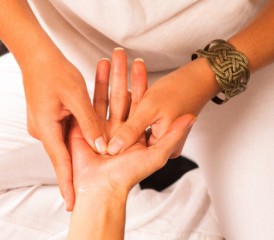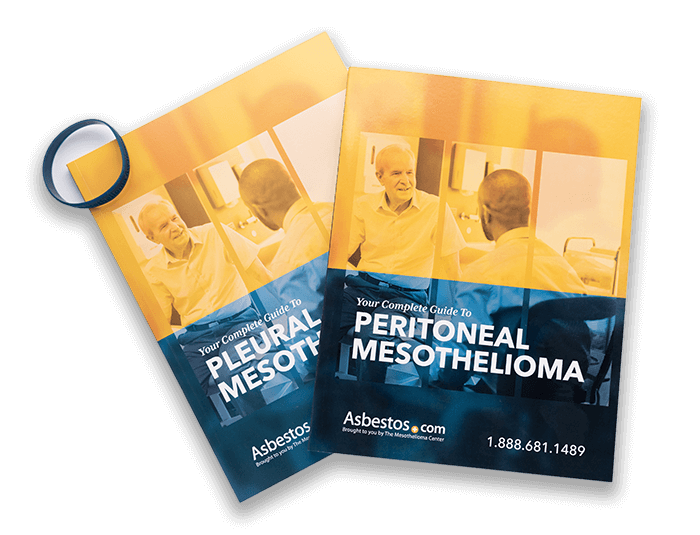Jin Shin Jyutsu: A Mesothelioma Patient’s Experience
Health & WellnessWritten by Faith Franz | Edited By Walter Pacheco

Ten years ago, Mary Morvant went on a spa trip with a friend.
The friend was battling constant back pain and planned regular trips to the spa for Jin Shin Jyutsu appointments. She claimed to feel much better after the sessions, but Mary had her reservations.
“She was just amazed,” Mary recalls, “but I couldn’t believe it.”
“Until somebody used it on me.”
Revitalizing Touch
Jin Shin Jyutsu (pronounced jit-su) is a gentle, non-invasive touch therapy that balances the body’s energy. The art combines a body-based and mind-based approach to healing, and practitioners refer to it as a physio-philosophy.
Jin Shin Jyutsu identifies 12 vital energy pathways in the body, as well as 52 points along these circuits. The points are known as safety energy locks.
Sometimes an imbalance develops between these points, which can disrupt the energy flow. Jin Shin Jyutsu practitioners work to unblock the circuit and restore consistent flow along the pathways.
“You go through a sequence that aligns the energy meridians, using the hands as jumper cables,” explained Mary. “You then hold them there until the pulses are synchronized.”
Although similar to other forms of Eastern bodywork, Jin Shin Jyutsu doesn’t involve massage or pressure. The practitioner starts by placing their hands over the patient’s wrists to listen to their energy pulses. They then identify the harmonizing sequence that will return their energy to a functional balance.
“After I was diagnosed [with mesothelioma], I got to days where I couldn’t walk from one room to the other. The therapy has definitely given me loads more energy.”
For Mary, whose fatigue has been close to debilitating since she began mesothelioma treatment, the quick results are a blessing.
“My energy level has at least doubled since yesterday,” she shared.
“After my first session, the practitioner told me to stay in bed for 20 minutes. I followed her directions and rested, and I just felt so much more energetic when I got up.”
Jin Shin Jyutsu for Mesothelioma Symptoms
Jin Shin Jyutsu isn’t just effective at restoring energy. The therapy can also help with pain, emotional distress and other cancer complications. In a study of breast cancer patients, it was especially effective at helping women adapt to their condition and improve performance of activities of daily living.
It can even help patients manage the side effects of their mesothelioma treatment.
“My chemo has caused a lot of digestive problems, so my therapist is having me do what they call a spleen flow,” says Mary. A spleen flow sequence involves energy locks along the spine, heel, rib cage, chest and collar bone.
“I was initially unfaithful. I was thinking it won’t really do anything since it’s the chemo that’s doing this to me,” she confides. “But I’ve been amazed. You just have to be the kind of person who’s able to relax and let it work.”
Self-Practice
One of the most appealing factors is that patients can learn to perform the therapy on their own.
Translated in English, Jin Shin Jyutsu actually means “The Art of the Creator expressed through a person of compassion.” And while patients are encouraged to learn from a master, they’re also encouraged to become their own practitioner. One of the practice’s core tenets is that the capacity to effectively use the therapy is inherent in everyone.
“The lady who did my therapy left me a list of things I can do for myself, which I have been doing. I’ve only had one official session, but I do the moves on myself twice a day, once in the morning and once in the evening.”
“She did more to me than I do to myself, but I like to do it in the car or when I have nothing else to do. And when I do it every day, it all comes together a little more quickly each time.”
Since her first session, Mary has taken it upon herself to learn more about the origins and practice of the therapy. She recommends the book Touch of Healing, by Mary Burmeister. Burmeister brought the practice to the United States in the 1950s, half a century after Master Jiro Murai developed it in Japan.
“At first it was the biggest mystery to me,” Mary confessed. Certainly, many mesothelioma patients can relate; most alternative therapies for the disease aren’t widely understood by traditional oncologists.
“But really, you’ve got nothing to lose.”
Would you try Jin Shin Jyutsu? Let us know in the comments below or on Facebook.







